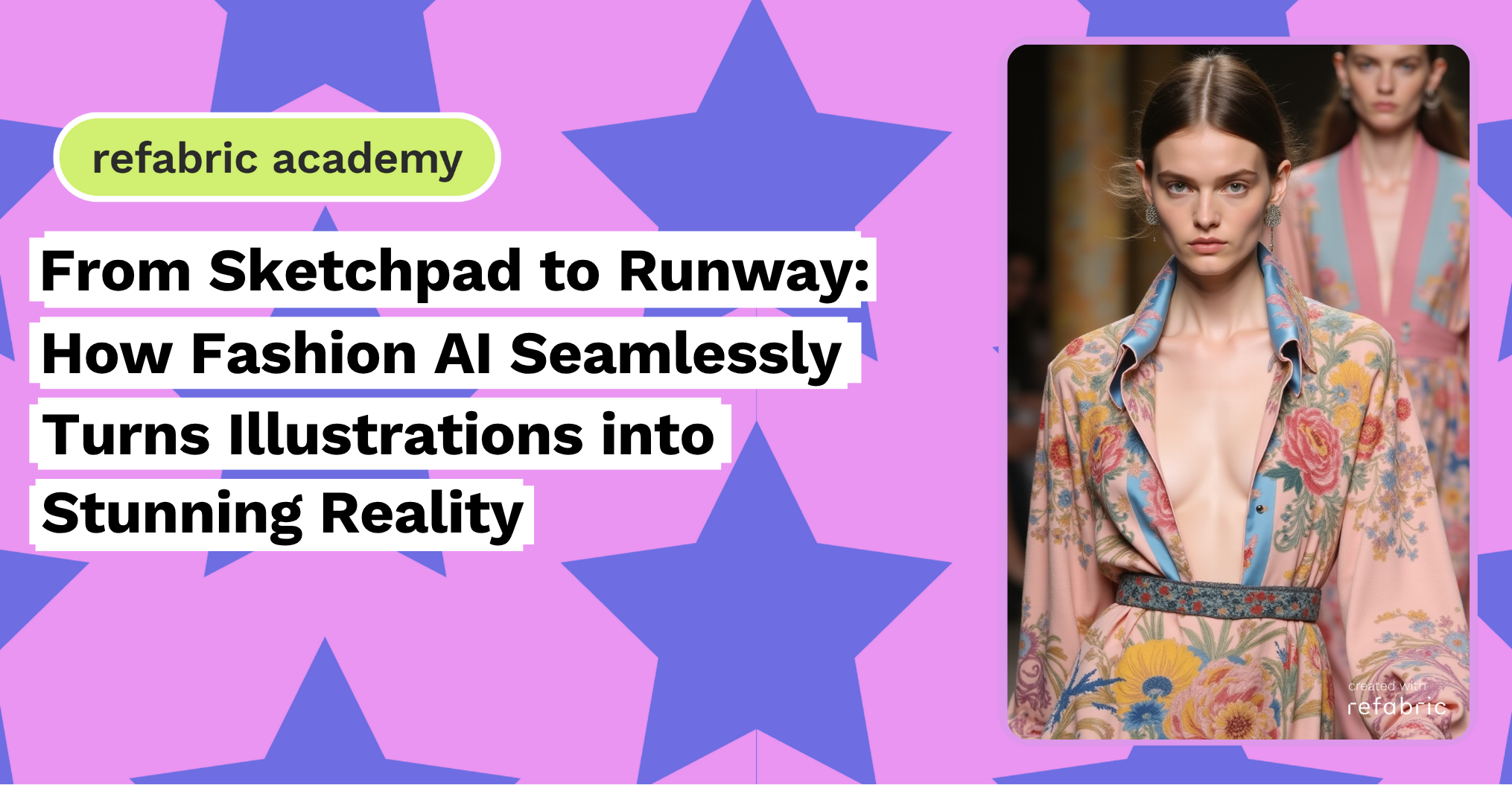The rise of fashion AI is turning what was once a long and fragmented process, transforming a designer’s vision into a finished garment, into a seamless journey from sketchpad to runway. While fashion has always been a blend of imagination and craftsmanship, the infusion of artificial intelligence is accelerating and refining each step, empowering designers to bring their concepts to life faster, smarter, and more creatively than ever before.
Revolutionizing the Design Process with Fashion AI
At the heart of every collection is the fashion sketch, a visual spark that captures a designer’s intent. Traditionally, turning that sketch into a wearable garment involved multiple rounds of sampling, fabric testing, and revisions. Today, fashion AI tools dramatically streamline this process. With AI-driven design platforms, illustrators can convert 2D sketches into photorealistic 3D prototypes in minutes. These virtual garments simulate how fabric will drape, move, and react to light, giving designers a high-fidelity preview long before any fabric is cut.
This digital-first approach allows for faster iteration and less waste. Designers can experiment freely with silhouettes, textures, and colorways without relying on costly physical samples. It’s creativity unleashed with the efficiency to match.
Enhancing Collaboration Between Art and Engineering
Fashion AI also acts as a powerful collaborator between artistic vision and technical execution. For example, platforms like Refabric’s sketch-to-design feature enables designers to translate their illustrated sketches into production-ready specifications by analyzing cut lines, seam placement, and fabric behavior. This minimizes the translation gap between design and production teams, ensuring that the final garment closely mirrors the original sketch.
Moreover, machine learning algorithms can suggest adjustments based on fit, comfort, or trend forecasting, ensuring the look isn’t just beautiful, but commercially viable. Fashion AI doesn’t overwrite creativity; it enhances it with actionable insights.
Speeding Up the Path to Market
In a world where speed is everything, fashion AI shortens the time from concept to consumer. With rapid digital prototyping and automated pattern generation, a design can go from sketch to runway-ready in a fraction of the traditional time.
Virtual try-on tools also allow brands to preview designs on a range of model types, body shapes, and skin tones without ever staging a photoshoot. Designers can instantly visualize their creations on diverse avatars, which not only enhances inclusivity but also empowers decision-making when curating final collections.
Sustainable Fashion Starts with Smarter Design
One of the most impactful advantages of integrating AI in fashion design is its role in sustainability. The traditional development cycle often involves excessive sampling, overproduction, and material waste. Fashion AI tackles these issues at the source.
By enabling digital design validation, fashion AI reduces the need for physical mockups. It also helps designers make eco-conscious choices by recommending sustainable materials or forecasting demand, preventing overstock. This transformation means fashion brands can innovate responsibly, aligning artistic ambition with environmental accountability.
Real-Time Feedback and Market Alignment
Once upon a time, a designer’s sketch was a solitary act, disconnected from immediate market feedback. Today, fashion AI bridges that gap. Some platforms now analyze social media data and consumer behavior in real time, allowing designers to align their vision with what audiences are responding to while still in the design phase.
This intelligence doesn’t dictate creativity; it informs it. Designers maintain their voice while leveraging AI insights to sharpen their competitive edge and create collections that truly resonate.
The Future of Fashion Illustration
What once began as a pencil sketch on paper is now a dynamic, data-enriched journey that blends art, science, and strategy. Fashion AI is not just a tool, it’s a transformation in how designers work, think, and create. From sketchpad to runway, fashion AI is the connective thread that ties vision to execution, making the entire design lifecycle more fluid, intelligent, and sustainable.
As fashion continues to evolve, one thing is clear: AI is not replacing the artistry of design, it’s propelling it. The runway has always been where imagination comes to life. Now, with the power of fashion AI, that transformation is happening faster, smarter, and more beautifully than ever before.
